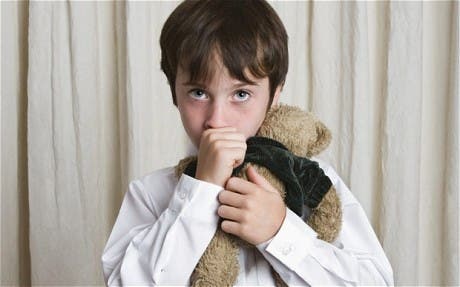
A team of development psychologists who have been following children’s temperament since they were babies until early adulthood found evidence that suggests shy or behaviorally inhibited (the official term) babies are more likely to become anxious adults. From here on a chicken and egg story unfolds: are these children overly shy because their brains are wired differently (see amygdala) or is the brain wired differently in response to the child’s temperament? Future research might answer this.
In 1993, Koraly Pérez-Edgar, now an associate professor of psychology at Penn State, and Nathan Fox a developmental psychologist at the University of Maryland, embarked in long-term undertaking which followed 153 4-month-olds. Which child was observed 8 to 12 times over the years until today, to see how their temperaments as babies evolved through adulthood. This is the most thorough study of its kind, one that suggests behavioral inhibition in children as a potential indicator of anxiety to come.
Inhibitions that haunt
Edgar describes a scene that took place more than 15 years ago. Three little girls, all four years old, play undisturbed in a room filled with toys and other pastime activities. One of the girls, Emma, seems to dominate the group and the other girl seem happy to follow her – she is the one that has the initiative, changing games and so on. A fourth girl is introduced to the group later, all while hiding her face and clinging to her mother. Emma goes over to her and invites the timid girl to play with all the others. In response, the girl stands up and desperately tries to open the door. The scene, which was videotaped, is so powerful that Edgar uses it to teach her students about behavioral inhibition even today. By this stage, however, the children can’t be termed as anxious, but this early behaviour is a powerful indicator of things to come, as they evolve towards adulthood.
“Kids aren’t yet anxious, but can have the temperament that may predispose them to become anxious,” is the way Pérez-Edgar puts it.
“When [a behaviorally inhibited] baby is exposed to novel sensory information — it can be something as benign as one of those mobiles you put over the crib or a normal jack-in-the-box — a lot of babies giggle and laugh, they think it’s funny. But these babies are terrified, they cry and arch their backs — their systems have just said ‘danger, danger, danger,'” she explains.
Is this structural or temperamental?
Building on the extensive studies that followed 153 children, just like the four girls described in the scene, the researchers drew a behavioral link. The hard part was trying to explain it. Namely, could extreme shiness be traced to changes in the brain? Are these children wired differently? To answer this question, the researchers invited the participants when they entered their teens to perform an MRI scan. Teenagers who as babies looked so fearful in the face of novelty, had their amygdalae respond more vigorously.
The amygdala is the seat of what we know as the fight-or-flight reaction. When stimulated, even after millions of years of evolution, it still triggers your nervous system to freeze and assess the situation (likely quicker than you actually have time to process it), and then tells the rest of your body either to stay put and defend or to head for the hills. It turns out that when the amygdala is overly-sensitive when it determines there is reason for fear, it can cause anxiety. The relation of causation, however, remains unclear.
“Here we have a chicken versus egg situation,” says Pérez-Edgar. “Is it because you’re temperamentally reactive that your amygdala is overactive, or vice versa?”
Next, Perez-Edgar and team plan on studying children aged 9 to 12 to see how their attention and temperament might be linked to social behavior. The amygdala isn’t solely activated by fear, but by some social cues as well.
Fear is the primary emotion that these children feel an causes them to become inhibited; fear that doesn’t show in other children. As such, these inhibitions, as the studies suggest, may follow them into adulthood causing them to grow anxious and fell maladjusted to society. Happy or not, should parents interfere through behavioral therapy? If indeed this is how their brains are wired (this doesn’t mean that their psychological state can’t state), should parent inter and try to make their kids act more normal in society just because their different? ZME readers, how do you fell about this?
source: Penn State


